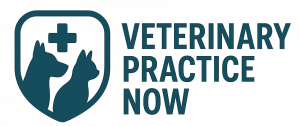For many livestock producers, biosecurity is often perceived as a cost rather than a crucial investment. Yet veterinarians stress that robust biosecurity measures are essential for safeguarding animal health and protecting farm profitability.
Veterinarians note that producers frequently underestimate the value of preventive measures until after facing significant disease outbreaks. A clear example comes from South Africa, where the 2017 outbreak of highly pathogenic avian influenza type A (H5N8) on commercial poultry farms highlighted the economic impact of inadequate biosecurity.
“It wasn’t until after a retrospective economic analysis of the outbreak that producers in the region truly realized the value of biosecurity,” said Dr. Ziyanda Majokweni-Qwalela, president of the South African Veterinary Association.
Dr. Majokweni-Qwalela and other experts shared insights during Dr. Csaba Varga’s session, ‘Evaluating and Improving Biosecurity on Beef Cattle and Swine Farms,’ held July 20 at AVMA Convention 2025 in Washington, D.C., part of the 40th World Veterinary Association Congress from July 18–22.
Biosecurity: The First Line of Defense
Dr. Csaba Varga, associate professor of epidemiology at the University of Illinois College of Veterinary Medicine, emphasized that pandemics can introduce diseases that threaten the U.S. livestock industry.
“The 2017 analysis helped farmers understand the financial benefits of implementing biosecurity measures,” said Dr. Majokweni-Qwalela. “Without such examples, disease prevention is always a hard sell, because producers may assume an outbreak will never happen on their farms.”
Dr. Varga described effective biosecurity as the first line of defense, particularly with global threats like African swine fever. “Biosecurity practices on beef cattle and swine farms are vital for preventing pathogens from entering farms and spreading within and between operations. The attitudes of both farmers and veterinarians toward disease prevention strongly influence the adoption and effectiveness of these measures,” he told AVMA News.
Survey Insights and Educational Tools
Dr. Varga and his team created two dedicated biosecurity websites for beef cattle and swine, designed to educate producers and conduct knowledge, attitude, and practice (KAP) surveys. Their work was funded by a $400,000 USDA grant through the National Animal Disease Preparedness and Response Program.
Findings published in Frontiers (2023) revealed a disconnect between producers’ perceptions and practices, alongside a strong reliance on veterinarians for biosecurity guidance.
Of 13 Illinois swine producers surveyed, most acknowledged that biosecurity is critical for disease control. Producers who understood the long-term consequences of animal disease outbreaks were more committed to implementing robust biosecurity measures. However, perceptions of foreign animal disease (FAD) risks varied.
For instance, five swine producers estimated the impact of an FAD outbreak would last 3–12 months, while eight believed it would last over a year. Disease modeling studies, however, suggest that the actual impact could persist 2–10 or more years, depending on response effectiveness.
In a separate Illinois beef cattle survey, only 50% of 537 respondents reported a veterinary visit in the past year. Survey data published in Antibiotics (March 2025) showed that veterinary visits and biosecurity assessments positively influenced producers’ knowledge and preparedness for outbreaks.
“Cattle pastures pose unique biosecurity challenges compared to enclosed swine barns,” Dr. Varga said. “But veterinarians play a critical role in fostering positive attitudes toward disease prevention, especially in remote areas.”
Boosting Biosecurity Implementation
Education and awareness are key starting points for implementing biosecurity, Dr. Varga noted. Veterinarians can enhance adoption by highlighting the financial and operational consequences of FAD outbreaks.
He also emphasized the value of educational resources, noting that infographics illustrating pig farm entry protocols were among the most downloaded materials from their websites.
“Farmers who understand the long-term impact of outbreaks are more likely to adopt enhanced biosecurity practices,” Dr. Varga said. “Livestock production is financially driven, and monetizing prevention is often challenging. Partnering with economists to demonstrate long-term economic benefits could be the key to increasing investment in biosecurity measures.”
Looking ahead, Dr. Varga aims to expand KAP surveys to dairy and poultry producers, as well as wildlife authorities, to further enhance biosecurity awareness and adoption.



